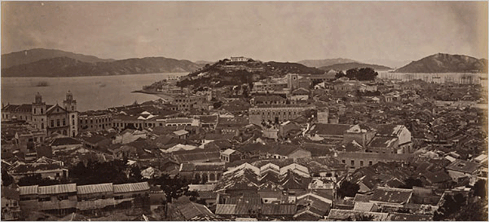China In The 19th & Early 20th Century
China in 1800-1911 was led by the Qing dynasty, or the Manchus, who were more like the Mongols than the traditional Han Chinese. Throughout the 19th and early 20th century, China dropped from the dominant nation in East Asia to a very unstable and weak power in the world.
One city became the center of the trading system linking China to the West: Canton. Canton was the perfect trade city as it was along the Pearl River; China could easily control who travelled to Canton.China was able to export many art and luxury items such as porcelain, tea, and silk to the West while only officially importing silver. This soon changed with the introduction of opium to China, and the Canton trade system deteriorated, leading to a war that brought China to its knees.
The introduction of opium to China soon led to all Chinese becoming addicted to opium, but its negative effects became clear. Commissioner Lin Zexu had the foreign merchants’ opium forcibly taken and destroyed. The infuriated British invaded China. They won easily because of their military superiority; long-range cannons were used to destroy any Chinese defenses and new ships with steam engines travelled up rivers against the currents. The beaten Chinese were forced to sign the treaty of Nanjing, where China paid $21 million and surrendered Hong Kong to Britain. This humiliation soon led to all-out rebellion in China.
After the humiliating Opium War, China realized its military wasobsolete. This started the bloodiest Chinese rebellion in history: the Taiping Rebellion, a rebellion started by Hong Xiuquan, who wanted to reform China based on Christianity, equality, and shared property. However, after much of the Taiping’s success, a Qing general named Zeng Guofan created a private army and defeated the Taiping. The Taiping Rebellion resulted in 20 million deaths and weakened China for decades. This rebellion led to an era in China known as the Self-Strengthening Movement.
The Self-Strengthening Movement was started by scholars who believed reform was needed for China. All scholars agreed that Western values differed much from Chinese values, but many disagreed on how to reform China. Some wanted to incorporate Western values into the already existing Chinese society or completely replace them with Western values. Others argued that the West and China are so different that it would be dangerous if the two mixed. The Self-Strengthening Movement motivated the Chinese to look to reform, and thus further rebellions for reform began.
The Boxer Rebellion was a movement to kill all foreigners in China, as the Boxers believed that traditional Chinese values would restore China’s former glory. The Boxers took over small cities by killing foreigners and Chinese Christians, and they soon arrived at Beijing. Cixi stated that the Qing would join the Boxers, who laid siege to the remaining foreign delegates in the embassies. However, eight foreign nations invaded China to defend their dignitaries, and the Boxers were defeated. The unequal treaty following the Boxer Rebellion forced China to give up more of its sovereignty and allow foreign soldiers to stay in the lands that China lost. This caused more unrest, and thus began the most revolutionary Chinese rebellion of all: the 1911 Xinhai Revolution.
During the Xinhai Revolution, a revolutionary thinker named Sun Yat-sen formed the Revolutionary Alliance after hearing of a rebellion in China. A Qing ex-military official named Yuan Shikai returned with orders to destroy the Revolutionary Alliance. However, Sun Yat-sen was already appointed Provisional President by the rebels, but lacked the military support to fully overthrow the Qing. Sun Yatsen offered Yuan Shikai the presidency, and the two formed a new nation called the Republic of China and a political party called the Kuomintang. However, Sun Yat-sen is known as the father of modern China, having brought the fall of the Qing dynasty and a new China, while Yuan Shikai announced a return to monarchy, leading to rebellion.
In conclusion, China went through more changes in 1800-1911 than it ever had in its history. China flourished well with the West through the Canton trade system, but with the introduction of opium and the start of the Opium Wars, China lost much control over trade. After the Taiping and Boxer Rebellions, China lost much of its sovereignty and was in a very weakened state. The Self-Strengthening Movement cried for reform, and the Xinhai Revolution in 1911 finally brought around a full reform to form the China that we know today.





